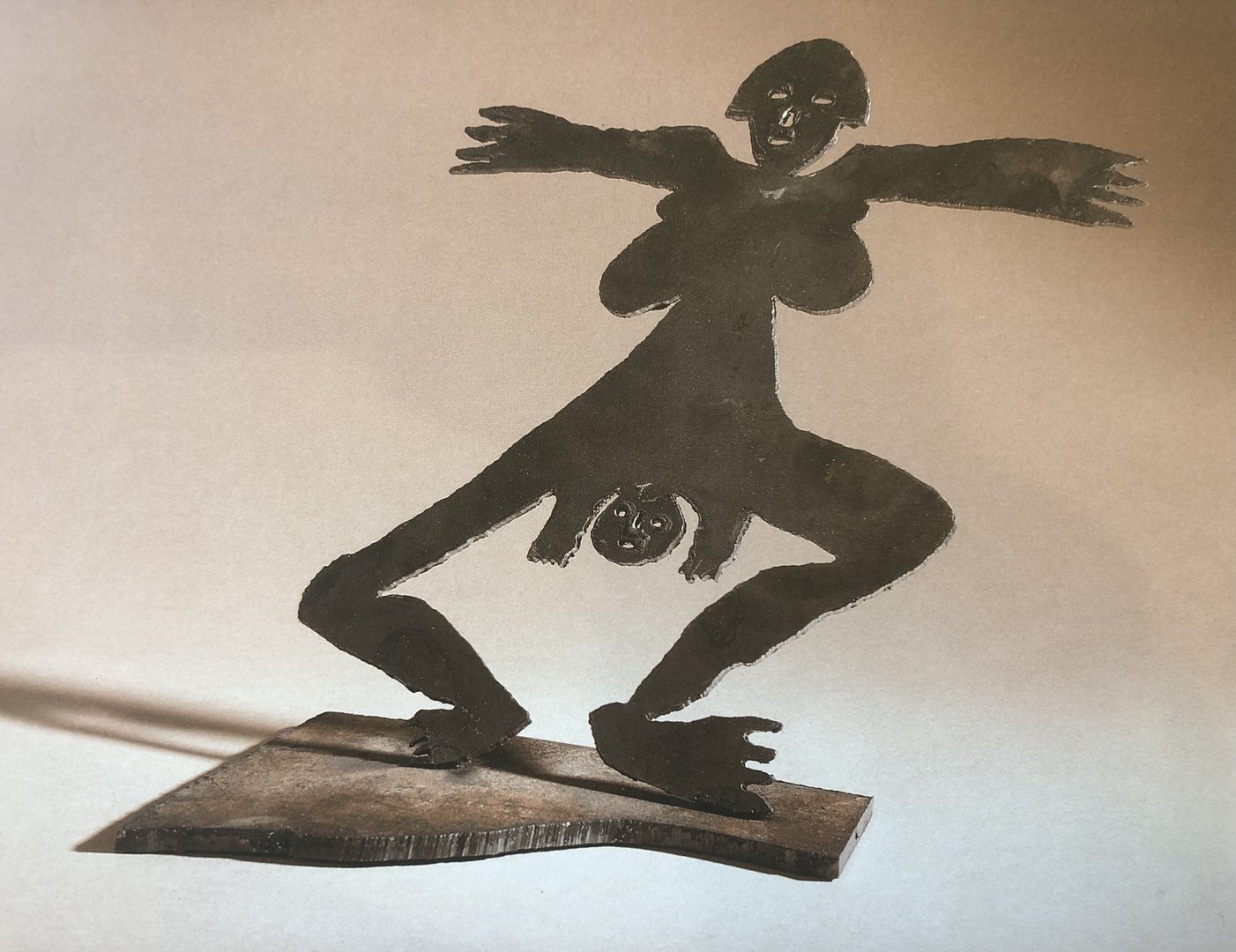Menashe Kadishman, born in Tel Aviv in 1932, was a world-renowned sculptor and painter. In 1959 he moved to London where he studied at Saint Martin’s School of Art and Slade School of Art, beginning his artistic career as a minimal sculptor. He was part of a celebrated group of artists in London that worked alongside British sculptor Anthony Caro. After an early figurative phase, he moved toward abstraction and conceptualism. Following his experience in Great Britain, Kadishman moved back to Israel where he lived and worked until his death in 2015.
Through the roughness of the medium – whether stone, crushed glass or sheets of metal – Kadishman strove to express the reality of Israel and remind us of lost values and broken promises. Figurative allusions such as animals and humans have always been present in his work, allowing nature and life to connect through the materials and themes represented.
His experience with nature, while working as a shepherd on a Kibbutz during his youth, had a significant impact on his artistic career. Toward the late seventies, portraits of sheep began to fill Kadishman’s canvases and eventually became his trademark, continually developing as his work evolved. Another recurrent theme, the horse, had the same source of influence, appearing prominently in sculptures and paintings. During the 80’s, imagery of sheep became a series of work based on the biblical story of the Sacrifice of Isaac, but with the peculiarity of centering the interest of the composition in the ram.
Profoundly affected by the injustices of war, themes of pain, sacrifice, birth and victims were always central in his work. One of his main motifs was the mother figure with her infant child depicted in exaggerated postures of pain, taken as a symbol of suffering during war and conflict. The maternal figure evolved into single heads, even more powerful and overwhelming in its symbolism.
Kadishman exhibited extensively throughout the United States and internationally. He participated in several editions of the Venice Biennale, and other major events such as the Paris Biennale, where he obtained great international recognition for winning the First Prize for Sculpture in 1967. His work is in numerous public collections such as the Metropolitan Museum of Art, New York; Museum of Modern Art, New York; Jewish Museum, New York; Tate Gallery, London; Hara Museum of Contemporary Art, Tokyo; Tel Aviv Art Museum, Tel Aviv; Jewish Museum, Berlin; City of Tel Aviv, Israel; City of Breda, Netherlands; City of Braunschweig, among others.
























